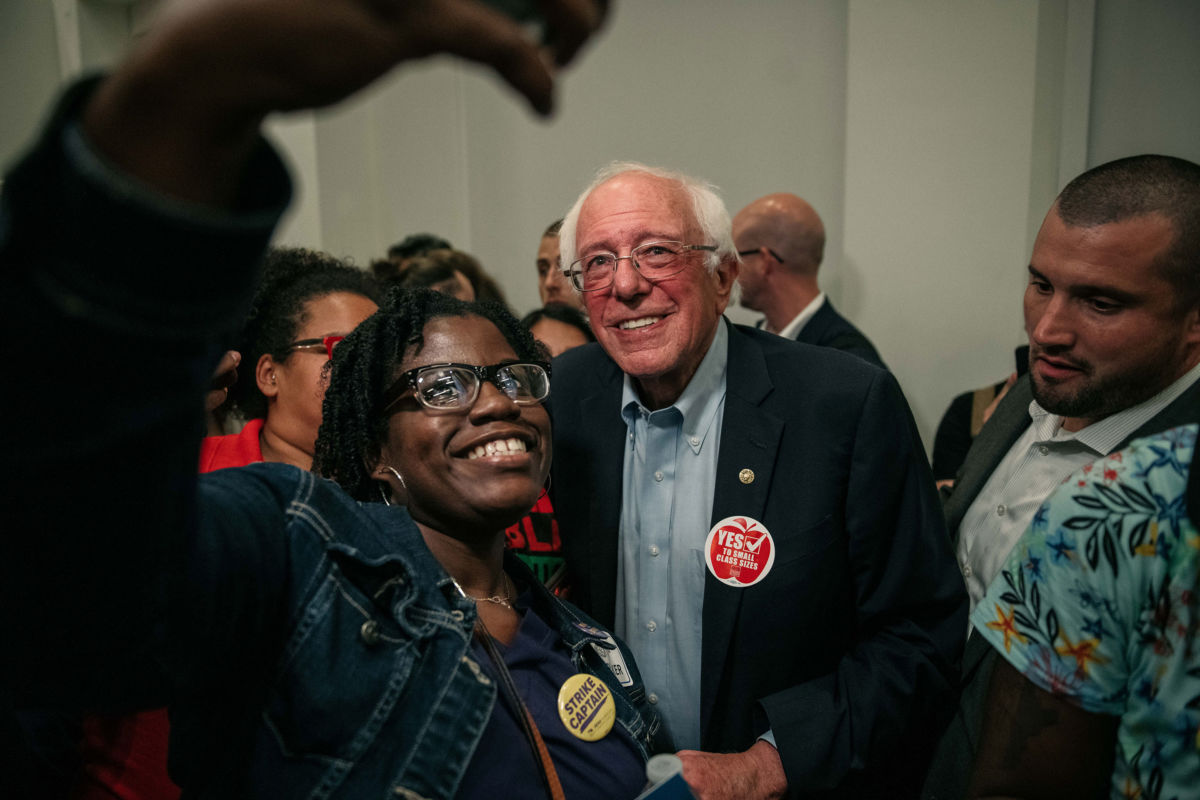As education reform rises to center stage in Democratic presidential debates, more candidates are putting forward plans to address some of the key issues raised by educators, competing for support from the education industry.
Some of the candidates appear to be more popular than others among different professions within the industry, based on campaign contributions through Sept. 30. Teachers, who combined to contribute $3.6 million to presidential candidates, gave a total of $1.2 million to Sen. Bernie Sanders (I-Vt.). Professors, on the other hand, favored Sen. Elizabeth Warren (D-Mass.), giving her campaign almost $800,000, more than what any other candidate received from that profession.
Sanders still leads the Democratic presidential field in fundraising from the education industry, which doled out a total of $13.2 million to Democratic contenders. The Vermont Senator’s grassroots campaign has brought in $2.9 million from the industry, only $20,800 of which came from those who maxed out to him. The senator, who enjoys a strong base of small-dollar donors, has amassed $43 million thus far from those who each made a contribution less than $200.
Sanders was the first Democratic presidential candidate to bring forward a plan to cap student loan interest rates and eliminate all student loan debt, totalling $1.6 trillion. His proposal also aims to provide free-for-all public higher education, establish debt-free public colleges and reduce private and nonprofit school tuition for low-income students. To pay for the plan, Sanders said he would impose a tax on Wall Street speculators, which he said would generate $2.4 trillion in the next 10 years.
Warren received $2.6 million from the education industry through September, including $84,000 worth of maximum contributions from mostly college and university faculty members.
The Massachusetts Democrat is the latest candidate to unveil her education plan. Like Sanders, she also promised to expand public access to education and raise pay for teachers. Both Sanders and Warren recently joined more than 32,000 educators protesting for improved work environments and a healthier pay structure in downtown Chicago, which is the latest addition to a running list of teacher strikes across the country.
Advocating for stringent tax policies on the rich, Warren plans to power her education reform with a two-cent wealth tax on individuals with a net worth of above $50 million.
Addressing funding inequality, the former Harvard law professor proposed allocating more money to states that invest more in low-income students and quadrupling funding for schools with the highest student population in poverty. She also promised to fight against school segregation by establishing more inclusive zoning laws and offering incentives for states to integrate public schools.
The next favorite presidential hopeful among educators is South Bend, Ind., Mayor Pete Buttigieg, who received $1.7 million from industry affiliates ahead of 2020, including $180,800 from those who maxed out to his campaign. Like Sanders and Warren, Buttigieg is a vocal critic of the massive student debt under Secretary of Education Betsy DeVos, saying that she failed to offer loan protections for defrauded student borrowers. The 37-year-old Harvard grad and his husband, Chasten Buttigieg, bear a student debt of more than $130,000, according to the Associated Press.
Buttigieg proposes debt relief for those who participate in “low-quality for-profit programs” and national service programs, a new approach to tackle the student loan crisis. He also says he’ll invest $25 billion in historically black colleges and schools serving minorities.
Sen. Kamala Harris (D-Calif.), whose first campaign policy as a presidential contender was to raise teachers’ pay by an average of $13,500, received $1.3 million from the education industry. The plan, billed as the “largest investment in teachers in American history,” proposes a $315 billion investment in pay raise for K-12 educators. Harris said she would change the estate tax structure to fund her plan, but did not specify how.
Others presidential contenders, such as former vice president Joe Biden and Sen. Michael Bennet (D-Colo.), also put forward education reform plans, but fell short of support from the industry compared to Sanders and Warren. Biden raised $916,375 from the industry whereas Bennet, a former Denver Public Schools superintendent, fell far behind. The Colorado Democrat received a little more than $200,000 from the industry, which accounts for 4.2 percent of the money he has raised from individuals thus far.
President Donald Trump’s campaign committee raised $418,334 from the education industry, which accounts for only 0.7 percent of the total individual contributions to his campaign.
Contributions from the education industry have been steadily increasing over the years, gravitating more toward liberal groups and Democrats than ever. The industry is one of the top industries giving to the Democratic Party during the 2020 election cycle, churning out $4.5 million to Democratic Party committees thus far.
Researchers Doug Weber and Alex Baumgart contributed to this report.
5 Days Left: All gifts to Truthout now matched!
From now until the end of the year, all donations to Truthout will be matched dollar for dollar up to $50,000! Thanks to a generous supporter, your one-time gift today will be matched immediately. As well, your monthly donation will be matched for the whole first year, doubling your impact.
We have just 5 days left to raise $50,000 and receive the full match.
This matching gift comes at a critical time. As Trump attempts to silence dissenting voices and oppositional nonprofits, reader support is our best defense against the right-wing agenda.
Help Truthout confront Trump’s fascism in 2026, and have your donation matched now!
